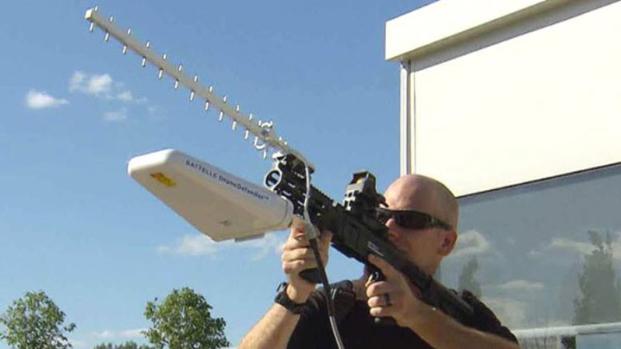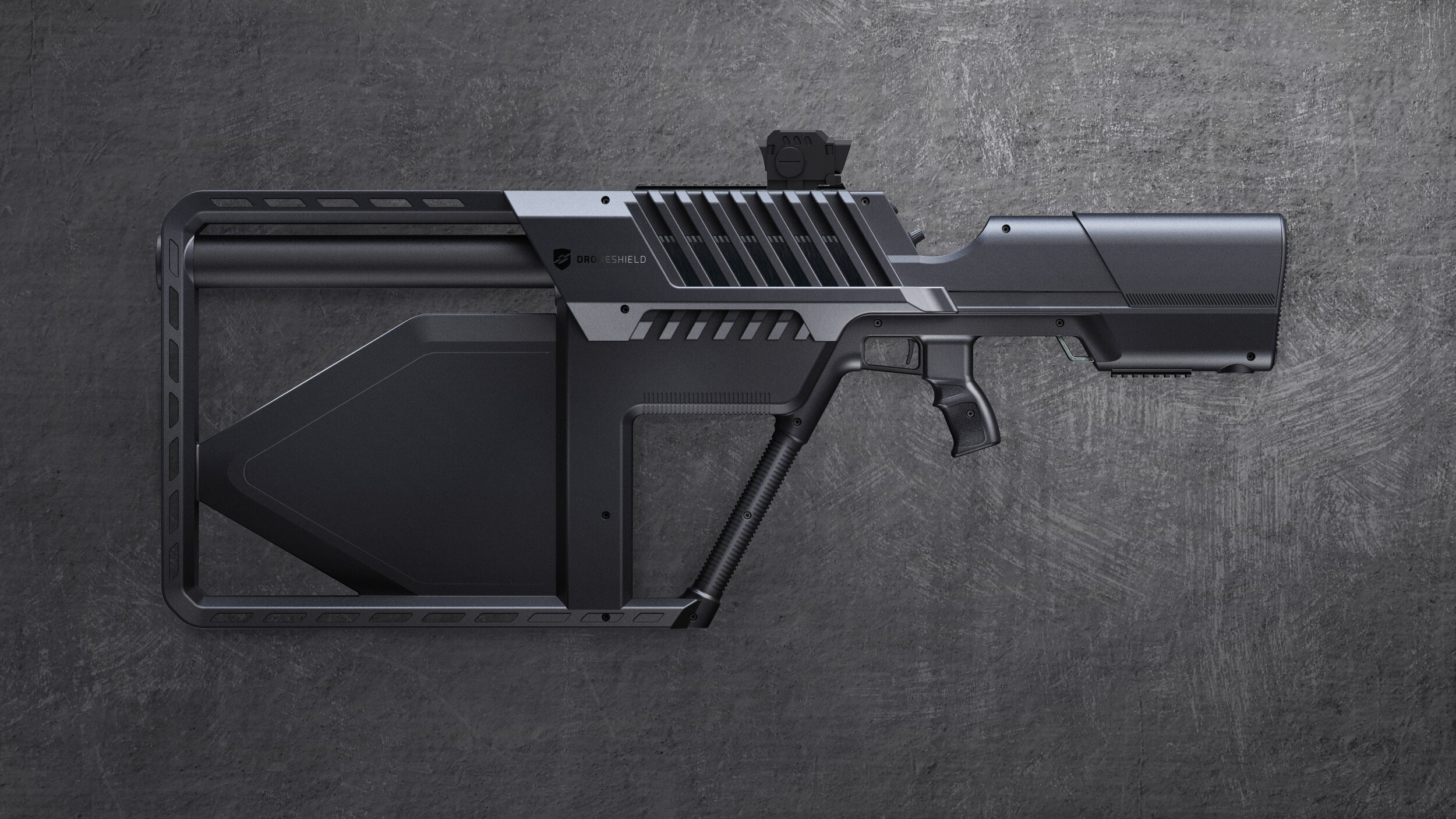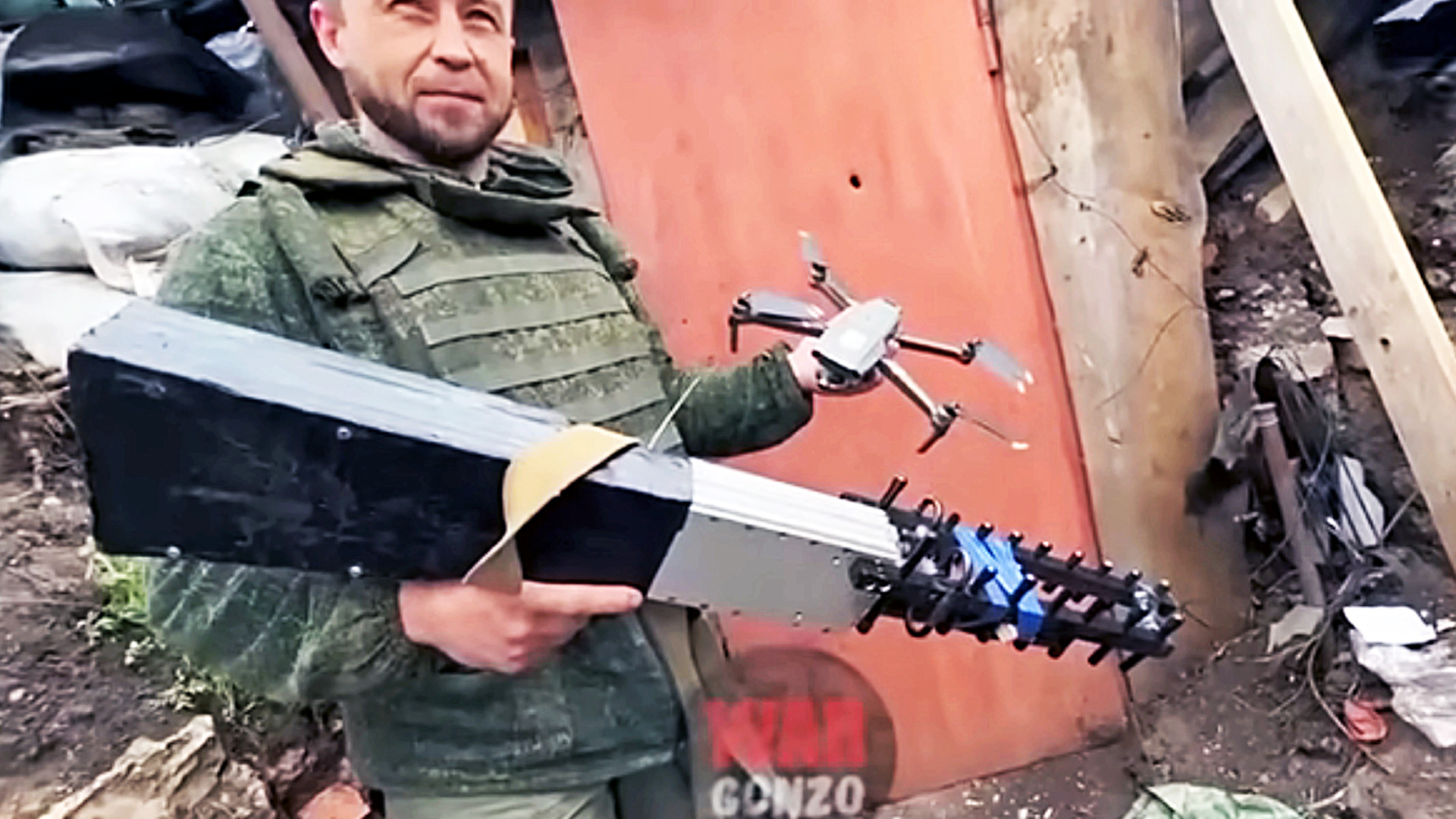Footage that purportedly depicts a Russian-backed separatist exhibiting a homemade counter-drone ‘jamming gun’ has emerged online. The video of the reveal comes amid a significant uptick in the utilization of lower-end drones during the ongoing conflict between Russia and Ukraine.
War Gonzo, a Russian YouTube and Telegram channel allegedly run by Semyon Pegov, a former journalist for the Russian TV channel LifeNews, posted the video. The gun, which War Gonzo dubbed as the Donbas “Kulibins” in the description of the video, is said to have already jammed and captured an unspecified number of Ukrainian drones.

Neither that assertion nor the operational success of the Kulibins has been verified, and War Gonzo’s pro-Kremlin narrative should be taken with a grain of salt. At the end of the footage, viewers are presented with what appears to be one of the Ukrainian drones that the creators behind the video claim to have captured. The quadcopter drone is adorned with the Ukrainian coat of arms, but it is unclear if this is common practice for Ukrainian forces and their drones and the logo could easily have been applied by the separatists themselves.
Kulibins, the name apparently given to the gun by the separatists, likely takes after the Russian-born mechanic and inventor Ivan Kulibin. According to various historical texts about Kulibin, none of his most renowned inventions had blatant ties to the military or defense technology in general. However, self-taught Russian inventors are said to revere Kulibin for his influence on mechanics, and the gun was probably named in his likeness as an homage.

Further information offered by the YouTube video’s description says that the unnamed man in the clip is apparently a member of the 100th Brigade of the People’s Militia of the self-styled Donetsk People’s Republic, a breakaway region of Ukraine. Despite the choppy YouTube machine translation from Russian to English, it can be gathered that the counter-drone gun in question was the result of an amalgamation of “spare parts” and is the only one to exist. War Gonzo insists that the specificities behind which spare parts were used exactly and any further information regarding the gun’s development is a “military secret.”
In the brief moments that it is on screen, the gun itself appears to be made up of an ambiguous and boxy receiver and buttstock, a trigger that may be hanging on by a tactical belt, and what looks like two Yagi antennas held together by electrical tape serving as the “barrel.” If this DIY anti-drone gun actually works, it would be those antennas that deliver the radiofrequency jamming capability that would make it a threat to Ukrainian drones.

A Yagi antenna, or a Yagi-Uda antenna, is a directional antenna made up of a dipole and additional parasitic elements like a reflector and at least one director. It is ideal for medium-range radiofrequency communications between two points and can be beneficial in counter-drone operations. In fact, many of the first anti-drone ‘guns’ looked similar to this improvised setup.

Today, they are much more production quality in terms of configuration and ergonomics. Take, for example, the Dronegun Tactical designed by Australian counter-unmanned aerial systems company Drone Shield.
The Dronegun Tactical uses Yagi antenna technology to engage the range of jamming frequencies needed to defeat the intended target. When drones are disrupted by the Dronegun’s multi-band radiofrequency jamming attack, the Drone Shield website explains that the drone will, at least in most cases, “respond via vertical on the spot landing or return to its remote controller or starting point.” Basically, the system jams the remote control command link and puts the drone into a default autonomous recovery or landing mode. If the Ukrainian drone in the video was attacked using similar jamming techniques, it would explain why it appeared to sustain minimal damage as its landing would have been controlled.

Rickety but sometimes ingenious improvised combat technologies have become an integral part of the conflict between Russia and Ukraine, and many of the components of these systems are commercially available and can be purchased online. Because of this accessibility, consumer drones have populated the airspace above conflict zones, including the one in Ukraine, thus the appearance of improvised counter-drone systems would seem to be a logical response to the threat.
The alleged Ukrainian quadcopter drone in the video looks to be Chinese-made DJI Mavic 2, a commercial type that is known to be in use in the conflict and that can be readily purchased online from sites like Amazon, or at least a very similar design. So, the haphazard development of an improvised counter-drone gun could prove successful in spite of its undesirable aesthetics, but the gun’s legitimacy still remains in serious question.
That isn’t to say that we haven’t already seen commercial signal jammers being employed by non-state actors. For example, Mexico’s Jalisco New Generation Cartel, a drug cartel better known by its Spanish acronym CJNG, shared a video in June 2021 showing a number of members of its “Elite Group” outfitted with cellular jammers, highlighting the growing proliferation of commercial signal jamming technology in parallel to that of improvised drones themselves. Considering how poorly equipped Russian-backed separatist forces appear to be, improvised counter-drone weapons may be the only option they have to combat the threat of low-end surveillance drones or drones armed with explosive munitions.
Of course, the video released by War Gonzo doesn’t include a demonstration of the mysterious Kulibins anti-drone gun, and even if it did, we may never really know if the thing even operates. Broadly speaking, however, meeting improvised drone threats with equally improvised countermeasures could well become a staple of the conflict as it continues to unfold.
Contact the author: Emma@thewarzone.com
